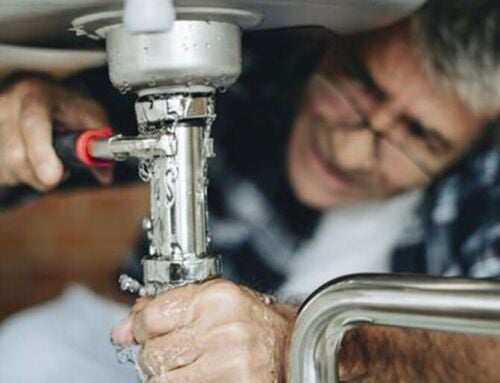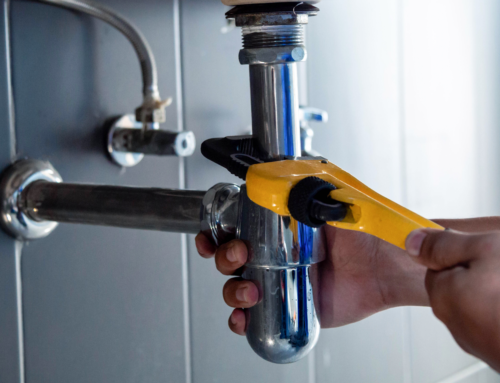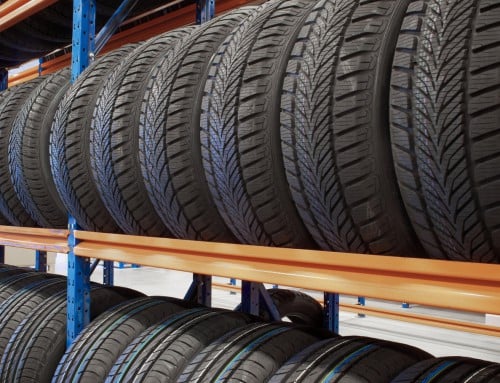On a construction site or worksite, there are a lot of moving parts — that includes all the contractors, subcontractors, and tradespeople that are essential to any project. Whether you’re a plumber, electrician, framer, roofer, HVAC installer, or other type of tradesperson, you’re critical to getting the job done. But you can also be responsible if something goes wrong.
This is where the right business insurance coverage can help. Contractor insurance is designed to help protect you and your business against everyday risks that contractors may face. At Federated, each policy is specifically customized to your business so you can get the appropriate coverage.
As important as insurance is, it’s also vital to avoid potential losses and liabilities by taking steps to protect yourself. The tips below can help minimize risk for contractors and give you peace of mind so you can focus on the job at hand.
Ensure you and your employees have proper protection
Whether it’s just you or you have a team of contractors around you, safety is of the upmost importance. Even if a contractor is good at their job, accidents can happen. The following steps can help minimize that risk:
- Ask subcontractors for a certificate of insurance that confirms and outlines their coverage. If a subcontractor doesn’t have insurance, the employer may be required to cover any losses.
- If possible, get the details on a subcontractor’s work history. This will give you insight into their timeliness, quality of work, and safety standards.
- If you’re working on an elevated structure, make sure the proper safety measures are in place. This can include guardrails, fall restraints, or a fall arrest.
- When working in confined spaces it’s important to have proper ventilation and equipment to protect yourself and employees. If working with hazardous material or toxic gas, test and monitor air quality regularly.
- If any job requires hot work, like welding or brazing, proper employee training and safety equipment must be provided. It’s also advised to conduct a fire watch for at least 60 minutes following any hot work.Depending on the type of work a longer fire watch may be required.
Properly store company vehicles
While a large construction company might store its fleet of vehicles and equipment in a central yard, a smaller contractor may be using vehicles that are taken home at the end of the day. That means a contractor or subcontractor has risks and exposures that are different from a large construction company. Some steps you can take to minimize these risks are:
- If you’re hiring someone that will drive a company vehicle, ask for a driving record or abstract.
- Contractors and subcontractors should ensure their vehicles are parked in a safe location — particularly if there are tools or materials inside.
- If the vehicle has windows in the back, they should be covered, removed, or blacked out, or a security cage can be used inside the vehicle to help prevent theft.
- Ensure vehicles are being serviced regularly, in accordance with manufacturer specifications.
Safeguard your tools and equipment
Proper tools and equipment are integral to the work contractors do. Theft not only slows down your project but could potentially lead to a large out-of-pocket expense. Tens of millions of dollars’ worth of tools and equipment are stolen each year in Canada. If you or your employees are leaving tools on a jobsite overnight or taking them home at the end of the day, how are they being protected? Here are a few steps that can help keep your equipment safe:
1. Develop an equipment theft prevention plan
A theft prevention plan is unique to every business. It’s important to build a plan that makes sense for the work you do and the equipment you use. For a single contractor, this may be as simple as checking if keys are removed, doors are locked, and tools are properly secured. For a larger contracting business, this may include surveillance cameras, security lighting, and metal fencing.
2. Practice detailed recordkeeping
Whether you keep a binder or use software to do your recordkeeping, having a current inventory and detailed records of all tools and equipment used on jobsites is an important element to equipment management and potential theft recovery.
3. Label your tools, equipment, and vehicles with identifying marks
Along with registering your equipment with the manufacturer, you can etch ID numbers onto equipment or vehicles. While this may not prevent these items from being stolen, it could help prove they’re yours if recovered.
4. Report theft as soon as possible
Report any theft to Crime Stoppers, the manufacturer of the equipment, as well as the police.
Conduct proper due diligence
Surprisingly, many insurance claims filed against contractors are not the result of negligence. They are filed because, when an incident occurs, the contractor cannot provide the required details of work performed, materials purchased, or documentation to verify work performed by sub-contractors. Some steps you can take to improve due diligence are:
1. Document work performed and materials used
Actions against a contractor can occur many years after a project is completed. That’s why efforts should not only be made to document work and materials but also to retain these documents indefinitely. This could include contracts, construction schedules, invoices, progress reports, inspection reports, equipment service and maintenance records, certificates of insurance, and documentation of work performed by subcontractors and consulting engineers
2. Perform pre-site inspections
A pre-site inspection can range from observing the overall physical conditions of a jobsite to interviewing personnel. Every business’s requirements are different and should align with local laws and regulations.
3. Follow quality control standards
Testing and inspection procedures can assure compliance with specifications, codes, and standards. In some cases, building codes, or even the terms of your contract, may call for independent inspection and testing by outside firms, municipal inspectors, or other government authorities.
Protect yourself from cyber risks
Businesses are rapidly moving their operations online, often without proper preparation — opening them up to cyber risks. Examine your digital processes to see if there are any vulnerabilities or security gaps. This can include email, payment software, file sharing software, or project management tools.
Cyber criminals may try to trick employees into giving away sensitive or financial information or getting them to click on a malicious link through a phishing email or phone call. It’s essential that contractors who collect and store customer information protect that data appropriately. For instance, if you’re holding employee banking information, they are trusting that you will protect it from unauthorized access and tampering.
Firewalls, intrusion detection systems, and endpoint protection such as anti-virus and malware solutions are all options that can help protect your network where your business’s data is stored. Most importantly, employee training on how to detect and prevent cyber attacks should be part of your onboarding process for new and existing employees.
Protect yourself and your contracting business
When it comes to risks and exposures for contractors — whether theft, fire, injury, cyberattack, or natural disaster, to name a few — most people think it will never happen to them. Unfortunately, these events do happen. That’s why it’s important to have the right protection in place. Federated can help minimize risk for contractors with a tailored business insurance policy. To learn more, visit our Contracting Insurance page today!
This blog is provided for information only and is not a substitute for professional advice. We make no representations or warranties regarding the accuracy or completeness of the information and will not be responsible for any loss arising out of reliance on the information.






